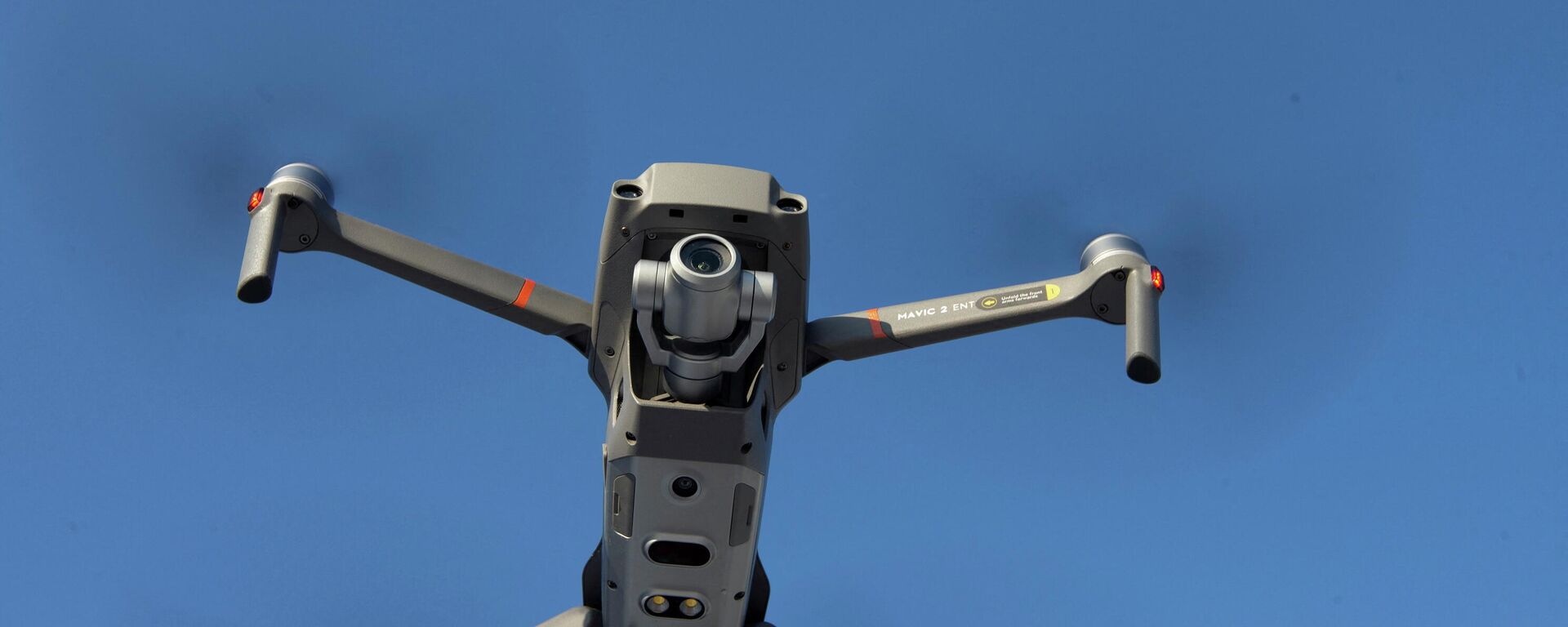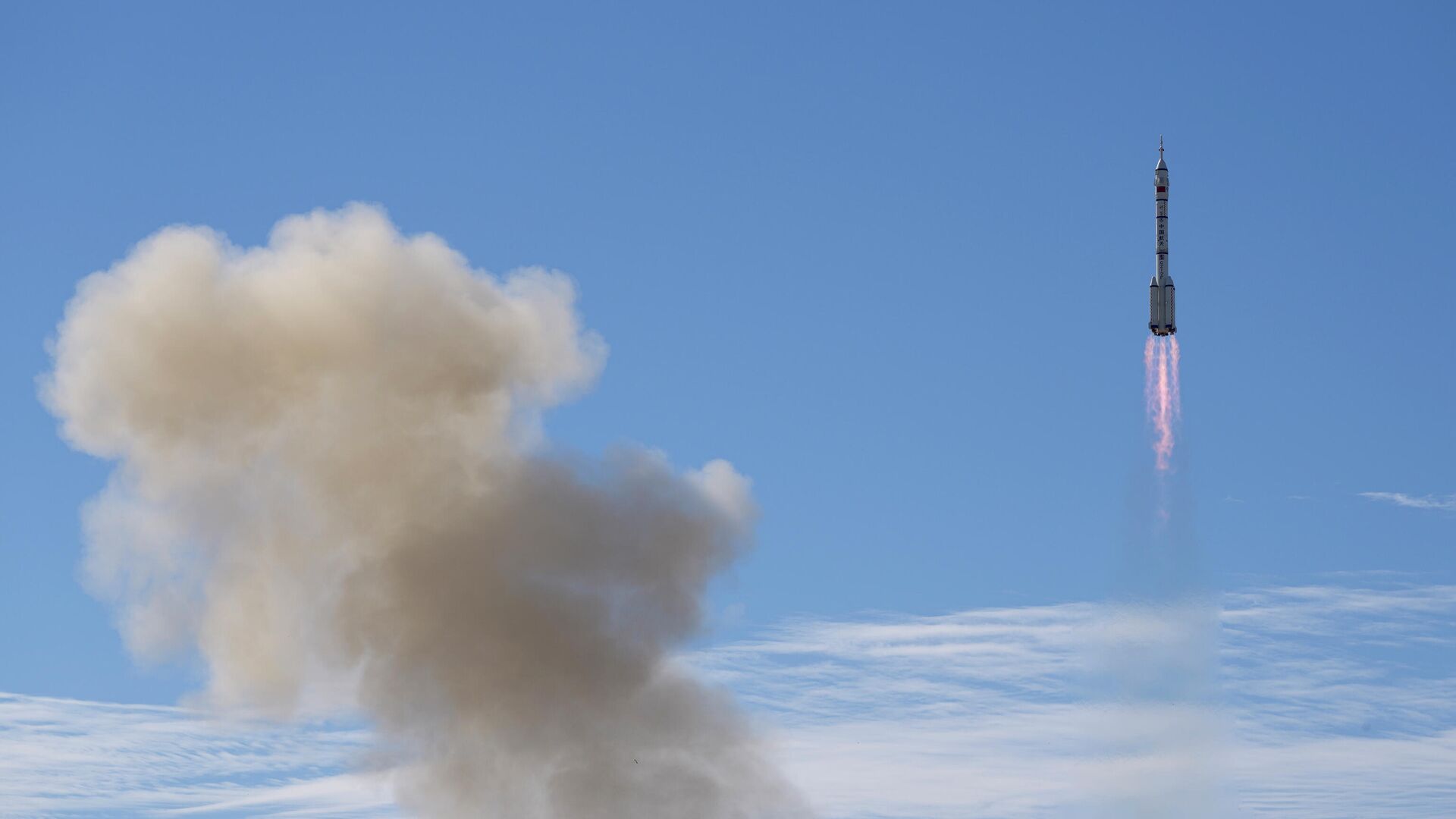https://sputnikglobe.com/20211228/china-successfully-tests-satellite-able-to-capture-hq-photos-of-us-city-in-less-than-1-min---report-1091849589.html
China Successfully Tests Satellite Able to Capture HQ Photos of US City in Less Than 1 Min - Report
China Successfully Tests Satellite Able to Capture HQ Photos of US City in Less Than 1 Min - Report
Sputnik International
Because attitude control devices can induce vibrations that blur pictures, most Earth observation satellites must be steady when capturing images. But the... 28.12.2021, Sputnik International
2021-12-28T02:06+0000
2021-12-28T02:06+0000
2021-12-28T02:06+0000
science & tech
china
satellite
spy satellite
satellite imaging
https://cdn1.img.sputnikglobe.com/img/07e5/0c/1c/1091849777_0:0:3072:1728_1920x0_80_0_0_855787e25963ed5b835d69bcc2095e95.jpg
A small Chinese satellite captured photographs of a vast region around a US city in 42 seconds, which is said to be much faster than many conventional commercial satellites, and the photo taken turned out to be sharp enough to identify a vehicle on the street, the South China Morning Post reported on Monday.According to the research cited in the report, Beijing-3, a small one-ton commercial satellite launched by China in June, completed an in-depth survey of the core area of the San Francisco Bay (3,800 square kilometers or 1,470 square miles).The resulting photo had a resolution of 50 centimeters per pixel and was obtained from a height of 500 kilometers (310 miles). And according to the researchers, the satellite's performance test revealed that it could collect photographs while rotating at up to 10 degrees per second, a pace never seen before on a satellite, the research team reportedly wrote in an article published earlier this month in the Chinese journal Spacecraft Engineering.According to the research, Beijing-3 is regarded as the most agile satellite in terms of speed and could be one of the most powerful Earth observation satellites ever created, despite its tiny size and low cost. The difference this satellite makes is seen when taking into account that a lower-orbiting satellite can usually see a straight, thin strip of land underneath it. To cover a region of interest, it must circle the Earth many times or collaborate with other satellites. But according to the report, Beijing-3's agility allowed it to complete some observation tasks previously thought to be technically impossible, such as taking images of the winding, 6,300-kilometer-long Yangtze River between the Tibetan plateau and the East China Sea in just one fly-by from north to south over China.The satellite can reportedly organize its flight itinerary independently, monitoring up to 500 regions of interest across the world with roughly 100 revisits every day, and is equiped with AI to do so. The satellite can also detect the existence of specific targets and provide ground control with photographs of them.Chinese Spacecraft Said to Outpass US AnaloguesAccording to the report, the response time of Beijing-3 is 2-3 times faster than that of WorldView-4, one of the most advanced Earth observation satellites created by the US with similar technology. Moreover, Beijing-3's scanning band is 77% broader than WorldView-4's (23km vs. 13km for the American satellite) while weighing half as much. With a resolution of 30 centimeters per pixel, WorldView-4's one-meter-wide telescope can provide slightly more detailed photos, the research team admitted. While this resolution is not enough to read a car license plate, it might be able to show the model of a military vehicle, which could be used to evaluate its performance, such as its shooting range.However, Chinese scientists believe that they managed to solve an issue that their colleagues from the United States could not, and that is the vibration WorldView-4 encounters when shifting its position, lowering image quality to a minimum. The Chinese Beijing-3 reportedly reduces vibration by an order of magnitude in comparison.Solar panels on the new platform are designed to keep them from swaying as the satellite spins swiftly and sharply. Any components that are suddenly exposed to the light could become overheated if an advanced cooling system is not used. To safeguard the satellite from the physical toll caused by rapid movement, critical components such as telescopes and antennas were developed employing innovative technologies such as AI control. A satellite developed on the new platform could store one terabyte of photos and transmit data to the ground at one gigabit per second, allegedly beating the speeds of US competitors.However, as the company behind the successful satellite development reportedly stated, China has room to grow in terms of production optimization and supply chains, as the satellite market for imaging is still dominated primarily by Western companies.
https://sputnikglobe.com/20211221/not-tiktok-alone-us-china-sanctions-war--shifts-to-drone-manufacturers--big-data---report-1091683155.html
china
Sputnik International
feedback@sputniknews.com
+74956456601
MIA „Rosiya Segodnya“
2021
News
en_EN
Sputnik International
feedback@sputniknews.com
+74956456601
MIA „Rosiya Segodnya“
Sputnik International
feedback@sputniknews.com
+74956456601
MIA „Rosiya Segodnya“
chinese satellite, beijing-3, satellite image,
chinese satellite, beijing-3, satellite image,
China Successfully Tests Satellite Able to Capture HQ Photos of US City in Less Than 1 Min - Report
Kirill Kurevlev
Managing Editor
Because attitude control devices can induce vibrations that blur pictures, most Earth observation satellites must be steady when capturing images. But the Chinese satellite managed to maintain image stability even by actively scouring and maneuvering in orbit in order to cover a larger area with one image than conventional satellites.
A small Chinese satellite captured photographs of a vast region around a US city in 42 seconds, which is said to be much faster than many conventional commercial satellites, and the photo taken turned out to be sharp enough to identify a vehicle on the street, the South China Morning Post
reported on Monday.
According to the research cited in the report, Beijing-3, a small one-ton commercial satellite launched by China in June, completed an in-depth survey of the core area of the San Francisco Bay (3,800 square kilometers or 1,470 square miles).
The resulting photo had a resolution of 50 centimeters per pixel and was obtained from a height of 500 kilometers (310 miles). And according to the researchers, the satellite's performance test revealed that it could collect photographs while rotating at up to 10 degrees per second, a pace never seen before on a satellite, the research team reportedly wrote in an article published earlier this month in the Chinese journal Spacecraft Engineering.
"China started relatively late on agile satellite technology, but achieved a large number of breakthroughs in a short period of time," Yang Fang of the DFH Satellite Company, a lead researcher in the study, is quoted in the report as saying. "The level of our technology has reached a world leading position."
According to the research, Beijing-3 is regarded as the most agile satellite in terms of speed and could be one of the most powerful Earth observation satellites ever created, despite its tiny size and low cost.
The difference this satellite makes is seen when taking into account that a lower-orbiting satellite can usually see a straight, thin strip of land underneath it. To cover a region of interest, it must circle the Earth many times or collaborate with other satellites.
But according to the report, Beijing-3's agility allowed it to complete some observation tasks previously thought to be technically impossible, such as taking images of the winding, 6,300-kilometer-long Yangtze River between the Tibetan plateau and the East China Sea in just one fly-by from north to south over China.
The satellite
can reportedly organize its flight itinerary independently, monitoring up to 500 regions of interest across the world with roughly 100 revisits every day, and is equiped with AI to do so. The satellite can also detect the existence of specific targets and provide ground control with photographs of them.
Chinese Spacecraft Said to Outpass US Analogues
According to the report, the response time of Beijing-3 is 2-3 times faster than that of WorldView-4, one of the most advanced Earth observation satellites created by the US with similar technology.
Moreover, Beijing-3's scanning band is 77% broader than WorldView-4's (23km vs. 13km for the American satellite) while weighing half as much. With a resolution of 30 centimeters per pixel, WorldView-4's one-meter-wide telescope can provide slightly more detailed photos, the research team admitted. While this resolution is not enough to read a car license plate, it might be able to show the model of a military vehicle, which
could be used to evaluate its performance, such as its shooting range.
However, Chinese scientists believe that they managed to solve an issue that their colleagues from the United States could not, and that is the vibration WorldView-4 encounters when shifting its position, lowering image quality to a minimum. The Chinese Beijing-3 reportedly reduces vibration by an order of magnitude in comparison.

21 December 2021, 05:42 GMT
Solar panels on the new platform are designed to keep them from swaying as the satellite spins swiftly and sharply. Any components that are suddenly exposed to the light could become overheated if an advanced cooling system is not used. To safeguard the satellite from the physical toll caused by rapid movement, critical components such as telescopes and antennas were developed employing innovative technologies such as AI control.
A satellite developed on the new platform could store one terabyte of photos and transmit data to the ground at one gigabit per second, allegedly beating the speeds of US competitors.
However, as the company behind the successful satellite development reportedly stated, China has room to grow in terms of production optimization and supply chains, as the satellite market for imaging is still dominated primarily by Western companies.





